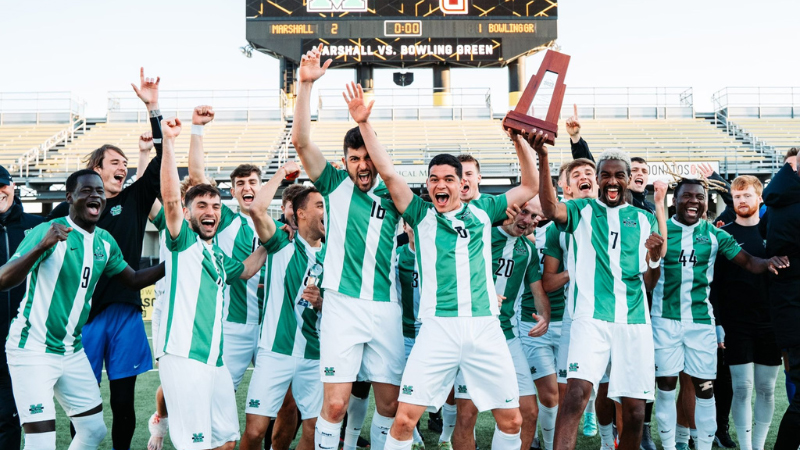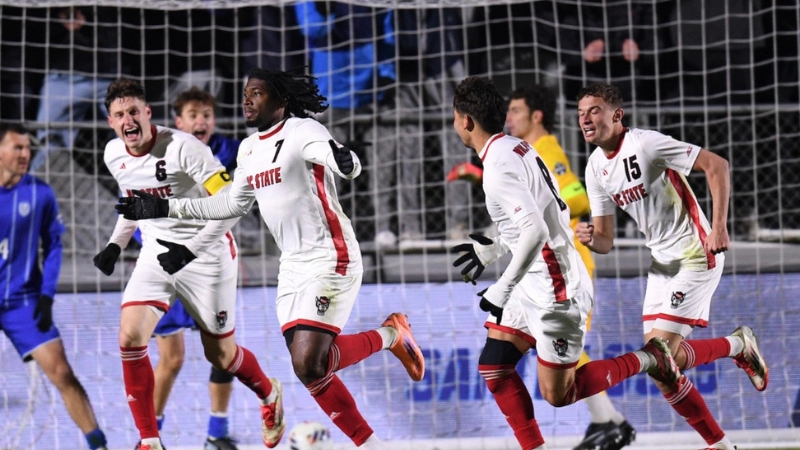Spring Leagues Are Changing College Soccer

With years of ongoing discussions about a potential year-round college soccer schedule, some programs have taken it upon themselves to create the competitive spring environment they desperately crave.
That creation is through spring leagues where programs can compete against each other with unofficial accolades and trophies on the line.
One example is the College Spring League, a league of eight teams split into two conferences. Those eight teams are Bowling Green, Cleveland State, Dayton, Michigan, Louisville, Marshall, Ohio State and Xavier. It is an impressive collection of some of the best Division I programs in the Midwest, topped off by Marshall, the 2020 College Soccer National Champions. The games are officially scrimmages, so they do not affect records in any way, but the level is as competitive, if not more so, than some regular season games.
The league was created as a means to organize the spring season in a way that increased competition," Dayton assistant coach Alex Ranalli told TopDrawerSoccer. "We felt higher stakes would lead to enhancing individual and collective development, which in turn would lead to positive outcomes for all programs involved.”
Last year’s spring league final between Marshall and Bowling Green took place in the Historic Crew stadium, with nearly three thousand viewers watching along on a Facebook live stream. It is a rarity to see spring games get that level of notoriety. And along with Marshall walking away with the championship trophy, Vini Fernandes of Marshall received an MVP award, Dyson Clapier of Akron walked away with a trophy as top scorer, and Oliver Semmle of Marshall won the golden glove.
The spring no longer has to be a low-competitive environment where few people care about the results, and the games are mostly ignored. It can replicate some of the high-stakes conditions of the regular season, which is beneficial to the development of the players, coaches, and programs.
There are hopes for the 21st-century model, which has gained momentum in the last decade as an alternative to the jam-packed model where teams play more than 20 games in three months.
“Adopting the 21st-century model would greatly improve the student-athlete experience. More time spent in class, increasing recovery between matches - leading to reduction of injury rates [and] increased quality of play," Ranalli said.
The College Spring League isn't the only example. Several of the top programs on the East Coast compete in the Spring Soccer Cup, with a final set to be hosted at Wake Forest on Sunday, April 16. That includes sides like Georgetown, Wake Forest, Maryland, Virginia, Virginia Tech and Pittsburgh.
The day may come when the NCAA adopts a two-semester competition calendar, but until then, organized spring leagues may be the future of college soccer.
Headlines
- Recruiting Roundup: December 8-14
- How Do I Get Scouted by TopDrawerSoccer?
- 2026 Women's Division I Transfer Tracker
- NC State Advances to First College Cup Final
- Washington Dominates College Cup Semifinal
-
GA Showcase/Champions Cup Goal Scorers

- TopDrawerSoccer TeamRank Update - Boys
-
High School All-American Game Preview

-
ECNL Girls New England Players to Know

- Get Spotted at Elite College ID Camps



